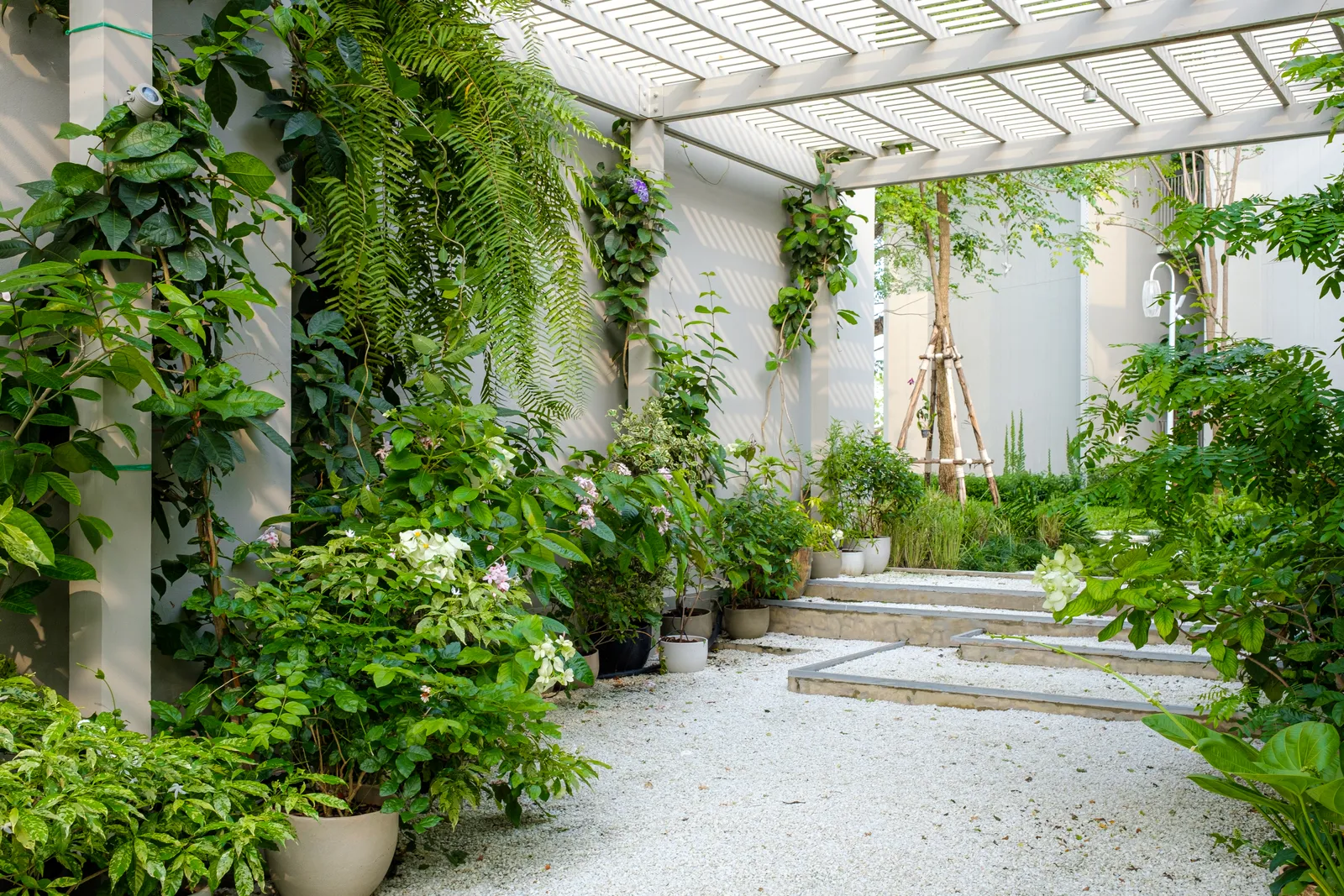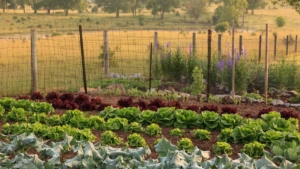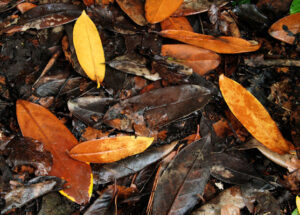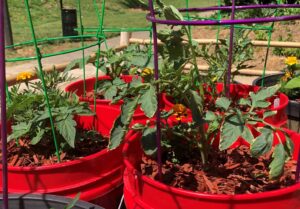Shade Garden Plants: Creating a Thriving Oasis in Low Light Spaces
Do you have a yard with towering trees, a north-facing garden, or spaces that simply don’t receive much direct sunlight? What might initially seem like a gardening challenge can actually become your landscape’s most enchanting feature. Shade gardens offer a peaceful retreat from summer heat and provide opportunities to grow unique plants that wouldn’t survive in full sun. This guide will help you transform those shadowy corners into lush, vibrant spaces filled with fascinating foliage and delicate blooms.
Understanding Shade Garden Conditions
Before selecting plants for your shade garden, it’s important to understand exactly what kind of shade you’re working with. Not all shade is created equal, and different plants thrive in different light conditions.
Types of Shade
Deep Shade: Areas that receive no direct sunlight and very little reflected light. These might include spaces under dense evergreen trees or on the north side of buildings with no reflective surfaces nearby.
Full Shade: Areas that receive no direct sun but have some ambient or reflected light. Many woodland plants thrive in these conditions.
Partial Shade: Areas that receive 2-4 hours of direct morning sun, with dappled shade during the rest of the day. This is ideal for many shade-loving plants.
Dappled Shade: Light that filters through the canopy of deciduous trees, creating a shifting pattern of sun and shade. This mimics the natural woodland environment where many shade plants evolved.
According to the USDA Natural Resources Conservation Service, understanding your specific shade conditions can significantly improve your plant selection success rate and overall garden health. You can learn more about shade classifications and plant adaptations on the USDA’s Plant Materials Program website.
Soil Considerations for Shade Gardens
Shade gardens often present unique soil challenges. Areas under trees typically have:
- Competition from tree roots for water and nutrients
- More acidic soil from leaf litter decomposition
- Potentially drier conditions as tree canopies can block rainfall
Before planting, consider amending your soil with compost to improve moisture retention and nutrient content. A soil test can help you understand what specific amendments your shade garden needs. Many woodland plants prefer slightly acidic soil, so this natural tendency can be advantageous if you choose the right plants.
Stunning Foliage Plants for Shade Gardens
In shade gardens, foliage often takes center stage, providing texture, color, and visual interest throughout the growing season. These plants don’t need to rely on fleeting blooms to make a statement.
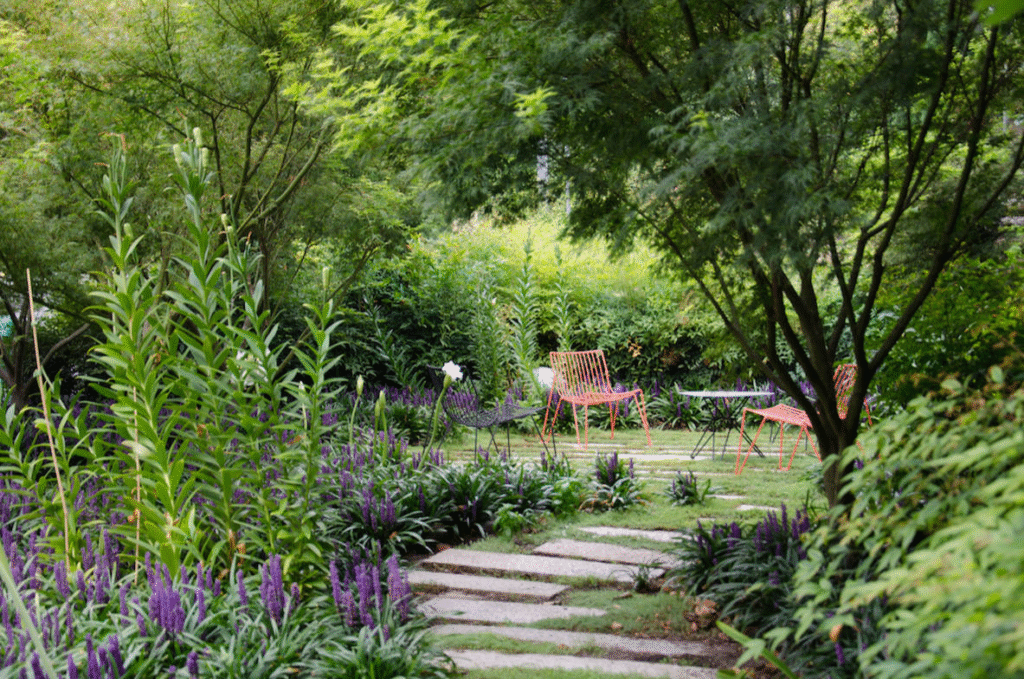
Hostas: The Shade Garden Superstars
Few plants are as synonymous with shade gardening as hostas. These versatile perennials offer an incredible variety of sizes, colors, and textures. From tiny miniatures just inches tall to massive specimens spanning 4 feet or more, there’s a hosta for every garden space.
Hostas feature prominently in many shade gardens because they’re exceptionally easy to grow and maintain. Their broad leaves effectively suppress weeds, and they return reliably year after year, often growing more impressive with age. While often grown for their foliage, don’t overlook their lovely flower stalks that attract hummingbirds and provide vertical interest.
Some outstanding hosta varieties to consider:
‘Sum and Substance’ features enormous chartreuse leaves that can span up to 18 inches across, creating a bold focal point in the shade garden. Its impressive size (up to 3 feet tall and 6 feet wide when mature) makes it perfect for filling large spaces.
‘Blue Mouse Ears’ sits at the opposite end of the spectrum, with small, rounded blue-gray leaves forming a tight mound just 8 inches tall. This miniature variety is perfect for edging, container gardens, or fairy gardens.
‘Patriot’ offers dramatic variegation with deep green centers and crisp white margins. The high contrast makes it a standout even in the darkest corners of your garden.
‘Fire Island’ brings warm golden color to the shade garden. New leaves emerge bright yellow and develop chartreuse tones as they mature, with distinctive red petioles (leaf stems) adding additional visual interest.
Ferns: Ancient Beauty for Modern Gardens
Ferns bring an air of primeval elegance to shade gardens. Their unfurling fiddleheads and feathery fronds create a sense of movement and softness that contrasts beautifully with broader-leaved shade plants.
Japanese Painted Fern (Athyrium niponicum ‘Pictum’) is an exceptional choice for American shade gardens, offering silvery-gray fronds accented with burgundy midribs. Growing 12-18 inches tall, it’s perfect for the middle layer of a shade garden and combines beautifully with hostas and heucheras.
The native Maidenhair Fern (Adiantum pedatum) features delicate, fan-shaped fronds on black stems, creating an airy, floating effect in the garden. It prefers consistently moist soil and protection from harsh elements.
Autumn Fern (Dryopteris erythrosora) provides multi-season interest with fronds that emerge coppery-pink in spring before maturing to deep green. As its name suggests, it often shows bronzy colors again in fall. This semi-evergreen fern maintains its structure through much of the winter in milder climates.
Heucheras and Heucherellas: Color Beyond Flowers
The coral bell family has exploded in popularity thanks to breeding efforts that have expanded their color palette to include nearly every shade imaginable. These evergreen perennials form tidy mounds of distinctively veined, often ruffled leaves.
‘Caramel’ heuchera offers warm amber tones that brighten shady corners, while ‘Obsidian’ provides nearly black leaves that create dramatic contrast. ‘Cherry Cola’ brings rich burgundy red, and ‘Lime Rickey’ contributes bright chartreuse to your shade palette.
Heucherellas, crosses between heucheras and tiarellas, often feature more deeply lobed leaves with striking patterns. ‘Sweet Tea’ shows off large cinnamon-orange leaves with burgundy centers, while ‘Tapestry’ displays blue-green leaves with dramatic purple-black veining.
Both heucheras and heucherellas produce delicate flower stalks above their colorful foliage, adding another dimension of interest. These plants perform particularly well in partial shade where they receive morning sun and afternoon protection.
Flowering Shade Plants for Seasonal Color
While foliage provides the backbone of shade gardens, flowering plants contribute seasonal bursts of color and attract pollinators to your garden. Many woodland wildflowers have evolved to bloom early in spring before the tree canopy leafs out fully, taking advantage of the brief period of stronger light.
Spring Bloomers for Shade
Bleeding Heart (Dicentra spectabilis) produces arching stems of heart-shaped pink or white flowers in spring. The classic form grows about 3 feet tall and goes dormant in summer heat, so plan to have later-developing plants nearby to fill the gap.
Virginia Bluebells (Mertensia virginica) carpet the forest floor with nodding clusters of pink buds that open to sky-blue trumpet-shaped flowers. This native ephemeral blooms in early spring and then goes dormant, making it ideal for naturalizing under deciduous trees.
Hellebores (Helleborus spp.) offer very early blooms, sometimes appearing in late winter. Their nodding, cup-shaped flowers come in shades ranging from white and cream to pink, purple, and near-black. Many newer varieties have spotted or picotee patterns for added interest. After blooming, their leathery, evergreen foliage provides structure throughout the year.
Summer and Fall Bloomers for Continued Interest
Astilbes create vertical drama with their feathery plumes rising above fern-like foliage. Available in shades of pink, red, lavender, and white, these reliable perennials prefer consistent moisture and rich soil. Stagger different varieties to extend the bloom season from early to late summer.
Toad Lilies (Tricyrtis spp.) bring exotic-looking blooms to the late summer and fall shade garden. Their orchid-like flowers, often spotted with purple, appear just when many other perennials are finishing their show. ‘Sinonome’ features white flowers heavily spotted with purple, while ‘Empress’ offers dark purple blooms with white spots.
Japanese Anemones extend the flowering season well into fall with their poppy-like blooms dancing above the foliage on tall, wiry stems. ‘September Charm’ produces single pink flowers, while ‘Honorine Jobert’ offers pristine white blooms that seem to glow in the shade.
Shade-Tolerant Shrubs for Structure and Permanence
Incorporating woody plants into your shade garden adds year-round structure and reduces maintenance needs over time. These shrubs can serve as anchors in your design, providing a framework around which you can arrange perennials and seasonal bloomers.
Hydrangeas: Showstopping Blooms for Shade
Many hydrangeas perform beautifully in partial shade, often producing stronger colors than they would in full sun. Hydrangea macrophylla varieties, including mopheads and lacecaps, develop blue flowers in acidic soil and pink in more alkaline conditions. ‘Endless Summer’ reblooms throughout the season, while ‘Twist-n-Shout’ offers beautiful lacecap flowers on red stems.
Oakleaf Hydrangea (Hydrangea quercifolia) is a native species offering multi-season interest. Its large, lobed leaves resemble oak foliage and turn brilliant burgundy in fall. Large panicles of white flowers fade to pink and then tan, persisting through winter for extended ornamental value.
Native Understory Shrubs
Serviceberry (Amelanchier spp.) functions as either a small tree or large shrub, producing delicate white flowers in early spring followed by edible purple-black berries that attract birds. Its fall color ranges from orange to red, adding seasonal drama to the shade garden.
Virginia Sweetspire (Itea virginica) offers fragrant white flower racemes that cascade from the branches in late spring, followed by exceptional burgundy-red fall color that persists well into winter. ‘Henry’s Garnet’ is a particularly outstanding cultivar, reaching about 4 feet tall and wide.
Ground Covers for Shade Gardens
Ground covers help suppress weeds, prevent erosion, and create a finished look in shade gardens. These low-growing plants fill spaces between larger specimens and can transform difficult areas into beautiful features.
Native Ground Covers for Ecological Gardens
Wild Ginger (Asarum canadense) forms a dense carpet of heart-shaped leaves, hiding unusual maroon flowers at ground level in spring. This native plant creates habitat for small pollinators and spreads slowly to form an effective ground cover in moisture-retentive soil.
Foamflower (Tiarella cordifolia) combines attractive foliage with delicate spikes of tiny white or pink flowers in spring. The maple-shaped leaves often feature dark central markings and may take on burgundy tones in fall and winter.
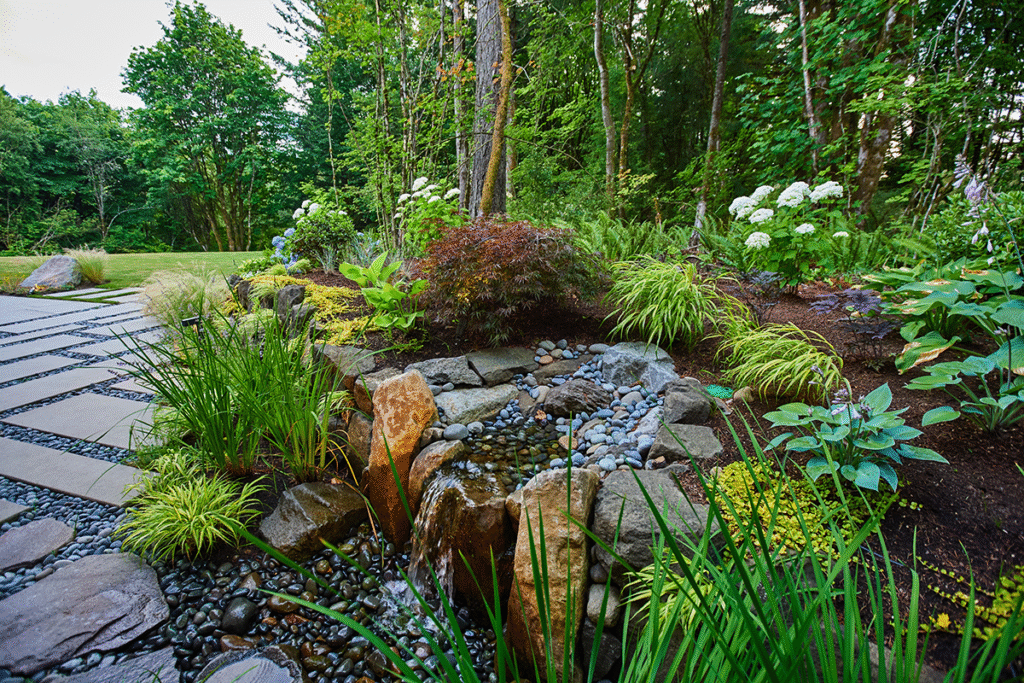
Evergreen Ground Covers for Year-Round Interest
Epimediums, sometimes called barrenwort or bishop’s hat, feature heart-shaped leaflets on wiry stems and dainty flowers in spring. Their semi-evergreen to evergreen foliage often displays beautiful red or bronze tones in fall and winter. ‘Sulphureum’ offers yellow flowers, while ‘Rubrum’ produces red blooms.
Christmas Fern (Polystichum acrostichoides) provides reliable evergreen structure in the shade garden. Its leathery fronds remain attractive throughout winter, making it valuable for year-round interest. This native fern grows about 2 feet tall and wide and tolerates dry conditions once established.
Shade Garden Design Principles
Creating a successful shade garden requires thoughtful design that works with the unique conditions rather than fighting against them. The following principles will help you develop a cohesive and beautiful shade garden.
Layering for Visual Interest
Effective shade gardens utilize layers that mimic natural woodland settings:
- Canopy: Existing trees or tall shrubs
- Understory: Smaller trees and large shrubs
- Shrub layer: Medium-sized woody plants
- Herbaceous layer: Perennials of various heights
- Ground cover: Low-growing plants that spread horizontally
By including plants at different heights, you create visual interest and maximize the growing space. Tall plants with airy foliage, like Japanese maples or dogwoods, can be underplanted with shade-loving perennials without blocking too much light.
Using Color Effectively in Low Light
In shade gardens, colors read differently than they do in bright sun. White, yellow, and light blue flowers appear to glow and can brighten dark corners. Silver and variegated foliage reflects whatever light is available, creating brightness even without flowers.
Consider creating a color echo by repeating similar hues throughout the garden. For example, you might use plants with burgundy accents, like ‘Palace Purple’ heuchera, Japanese painted fern, and ‘Diabolo’ ninebark to create a cohesive theme.
Creating Seasonal Interest
Plan your shade garden to provide visual interest in every season by considering:
- Spring: Early-blooming bulbs and ephemerals
- Summer: Hostas, astilbes, and ferns at their peak
- Fall: Plants with notable autumn color or late blooms
- Winter: Evergreen structure, interesting bark, and persistent seed heads
Recommended Shade Garden Plants by Light Levels
The table below provides a quick reference for selecting plants based on your specific shade conditions. These plants have been selected for their reliability, ornamental value, and availability in the US market.
| Plant Name | Deep Shade | Full Shade | Partial Shade | Notable Features | USDA Zones |
|---|---|---|---|---|---|
| Japanese Forest Grass (Hakonechloa macra) | No | Yes | Yes | Golden or variegated cascading foliage | 5-9 |
| Heuchera ‘Obsidian’ | No | Yes | Yes | Near-black glossy foliage | 4-9 |
| Christmas Fern | Yes | Yes | Yes | Evergreen, drought-tolerant once established | 3-9 |
| Hellebore ‘Ivory Prince’ | No | Yes | Yes | Early blooms, deer resistant | 4-9 |
| Wild Ginger | Yes | Yes | Yes | Native groundcover with heart-shaped leaves | 4-7 |
| Ligularia ‘The Rocket’ | No | Yes | Yes | Tall yellow flower spikes, large leaves | 4-9 |
| Lungwort (Pulmonaria) | No | Yes | Yes | Spotted foliage, spring flowers | 3-8 |
| Foamflower | No | Yes | Yes | Native with maple-like leaves, spring flowers | 4-9 |
| Japanese Painted Fern | No | Yes | Yes | Silver-burgundy fronds | 4-9 |
| Oakleaf Hydrangea | No | No | Yes | Multi-season interest, native | 5-9 |
| Toad Lily ‘Sinonome’ | No | Yes | Yes | Orchid-like spotted flowers in fall | 4-9 |
| Bleeding Heart | No | Yes | Yes | Heart-shaped flowers in spring | 3-9 |
| Astilbe ‘Fanal’ | No | Yes | Yes | Red plumes, summer blooming | 4-9 |
| Japanese Anemone | No | No | Yes | Late summer/fall flowers | 4-8 |
| Brunnera ‘Jack Frost’ | No | Yes | Yes | Silver foliage with green veins, blue flowers | 3-8 |
Maintenance Tips for Shade Gardens
Shade gardens typically require less frequent watering than sun gardens once established, as evaporation rates are lower. However, if your shade garden is located under trees, you’ll need to monitor soil moisture carefully, as tree roots compete for water. Using a soaker hose or drip irrigation system helps get water directly to your plants’ roots.
Fertilizing shade gardens requires a balanced approach. Many woodland plants are adapted to lean soil conditions and don’t need heavy feeding. A single application of slow-release fertilizer in spring is usually sufficient. Alternatively, an annual top-dressing with compost provides gentle nutrition while improving soil structure.
Mulching is particularly important in shade gardens, as it:
- Conserves moisture
- Suppresses weeds
- Adds organic matter as it breaks down
- Protects roots from temperature fluctuations
Shredded leaves make an excellent, free mulch for shade gardens, mimicking the natural forest floor environment. Maintain a 2-3 inch layer, but keep mulch pulled back slightly from plant crowns to prevent rot.
Common Challenges in Shade Gardening
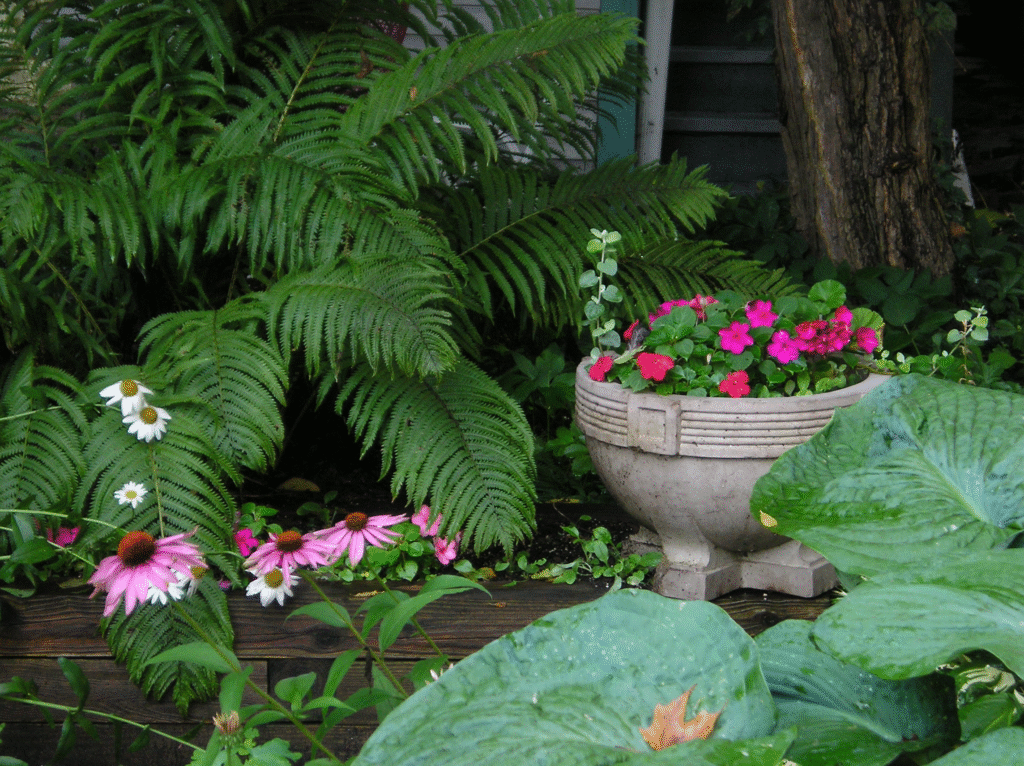
Dealing with Tree Roots
Tree roots compete with other plants for water and nutrients, making gardening underneath established trees challenging. To minimize competition:
- Choose plants with shallow root systems that won’t compete directly with tree roots
- Create raised beds or mounds to provide more soil depth for your plants
- Water deeply but infrequently to encourage both trees and understory plants to develop deeper roots
- Avoid damaging tree roots when planting by using a sharp spade to make clean cuts rather than tearing roots
Managing Dry Shade
Dry shade, often found under mature trees or along north-facing walls, presents one of gardening’s most challenging conditions. Some strategies for success include:
- Select drought-tolerant shade plants like epimediums, hellebores, and Christmas fern
- Improve soil with compost before planting to increase moisture retention
- Mulch heavily to conserve moisture
- Water deeply and less frequently rather than shallowly and often
- Create a watering basin around new plants to direct water to their roots
Controlling Shade Garden Pests
While shade gardens tend to have fewer pest problems than sunny areas, they do face some specific challenges:
Slugs and snails thrive in the cool, moist environment of shade gardens. Control them by:
- Setting out shallow containers of beer to trap them
- Creating barriers of crushed eggshells or diatomaceous earth
- Handpicking in the evening when they’re most active
Deer often browse shade gardens, particularly in winter when food is scarce. Choose deer-resistant plants like hellebores, ferns, and foxgloves, or consider installing physical barriers like netting or fencing.
Conclusion: Embracing the Beauty of Shade
Rather than viewing shade as a limitation, consider it an opportunity to create a garden with unique character and peaceful ambiance. Shade gardens offer respite from summer heat, require less watering than sun gardens, and provide habitat for wildlife ranging from birds to beneficial insects.
By selecting appropriate plants, understanding your specific conditions, and following sound design principles, you can transform even the darkest corner of your landscape into a lush, inviting space that provides beauty throughout the seasons. Your shade garden may well become your favorite retreat—a cool, serene oasis where you can reconnect with nature’s quiet side.
Remember that shade gardens evolve gradually, often improving with age as plants mature and fill in. Be patient with your shade garden’s development, and you’ll be rewarded with a low-maintenance landscape feature that offers endless fascination and beauty.
For more comprehensive information on selecting native plants for shade conditions in your specific region, visit the U.S. Forest Service’s Native Plant Database, which provides region-specific plant recommendations and growing information.
